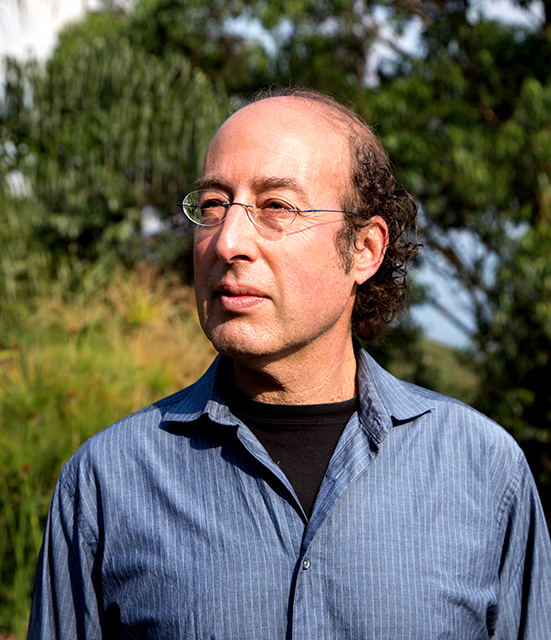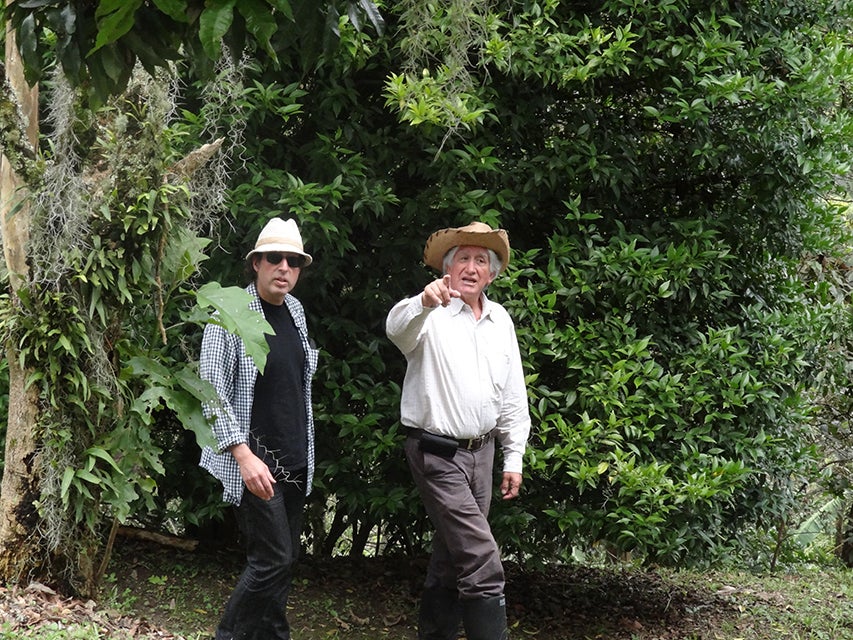connect
The Neuroarchaeologist
Alumnus Kenneth Kosik’s analysis of a unique family’s genes may point the way to a better understanding of Alzheimer’s disease
 IMAGE: Courtesy of Kenneth S. Kosik
IMAGE: Courtesy of Kenneth S. KosikKenneth S. Kosik
The locals call it La Bobera ("the foolishness"), an early-onset form of Alzheimer's disease that has plagued generations of an extended family living in northwest Colombia. It often strikes people in their mid-40s and results in death within 10 to 12 years.
For nearly three decades, Kenneth S. Kosik, MD (ADL '72, GRS '72, English literature), and his colleagues have studied the family, striving to better understand the genetic factors contributing to Alzheimer's. Their aim? To identify the biological mechanisms involved so scientists can develop new therapies to treat—or even prevent—the disease.
Their work first gained international attention in 1995 when the researchers discovered the "Paisa" gene mutation (PSEN1 E280A), named after the Colombian Paisa people who are among the mutation‘s carriers. It caused Alzheimer’s in every person who had it.
That is, until Aliria Rosa Piedrahita de Villegas, a Paisa woman who had the gene mutation but never developed the disease. She only experienced mild cognitive issues starting in her early 70s, far past the age when other family members were diagnosed with Alzheimer's disease. She died in November from cancer, at age 77, and her family donated her brain to science.
Her escape from Alzheimer's was so curious—and the desire to learn from her brain so keen—that news outlets around the United States ran stories about her late last year.
"She had the Paisa mutation and another, even more rare, mutation, which may have protected her," said Kosik, the Harriman Professor of Neuroscience and co-director of the Neuroscience Research Institute at the University of California, Santa Barbara. "Sometimes the effects of a bad mutation can be mitigated by a good mutation."
Kosik and his lab staff are among several research groups that recently received samples of Piedrahita de Villegas's brain tissue. They will seek to unravel the basis for her unique protection from Alzheimer's disease.
By performing the fundamental science needed, their findings may help scientists better understand how to develop therapies that could benefit Alzheimer's patients around the globe.
A Unique Family
While Alzheimer’s disease is common—affecting about 50 million people worldwide—the Colombian family Kosik studies is not.
Comprising about 5,000 living people, they are the largest "Alzheimer's family" in the world.
Kosik first learned of the family from neurologist Francisco Lopera, MD, who attended a lecture Kosik gave in 1992 at the University of Antioquia in Medellín, Colombia. Lopera told him about the mysterious dementia that looked suspiciously like Alzheimer's, but had symptoms that appeared much earlier in life.
His interest piqued, Kosik committed to helping Lopera find the gene mutation responsible. Since then, he has visited Colombia numerous times, traveling to urban barrios and to remote villages to personally connect with those he studies. Through this hands-on approach, he built trust and "fell in love" with the country and its people.
“Ken was the first foreign researcher interested in what we were doing," said Lopera, director of the Antioquia Neuroscience Group in Medellín. "He's able to see Alzheimer's disease in a comprehensive way and has contributed greatly to the understanding of the role of genetic factors in the disease."
Genes Tell a Story
 Image: Courtesy of Mary Luz Arcila
Image: Courtesy of Mary Luz ArcilaKenneth Kosik (left) with neurologist Francisco Lopera, in Medellín, Colombia. It was Lopera who initially told Kosik about the family in Columbia that had been struck with an early-onset form of Alzheimer's disease.
Colombians possess a genetic mixture of Indigenous, European and African descent. Exploring their genomes is like unearthing the past, thanks to stretches of DNA that point to their historical origin.
Using genetic analysis to not only trace disease but also reconstruct history is a feat Kosik dubs "neuroarchaeology."
In analyzing the genomes of the Colombian family, Kosik's team found that the Paisa gene mutation dates back to the 16th-century Conquistadors from Spain who invaded the country. And is thought to be present only in this family.
"Science is really a matter of telling a story," said Kosik, who earned both his bachelor's and master's degrees in English literature from Case Western Reserve. "Data is just a bunch of information that may or may not relate to what you're trying to learn. Literature teaches you how to take these separate facts, observations and insights and put them together to tell a compelling story."
The Protective Gene
While people with the Paisa mutation usually develop Alzheimer's symptoms in their 40s, a few outliers experience it later in their 50s or 60s. In the case of Piedrahita de Villegas, researchers found not only the Paisa mutation, but a second exceedingly rare one called the Christchurch variant. It was named after the New Zealand city where it was first found many years earlier, although at the time no one had any idea that it might be connected to Alzheimer's disease.
The Christchurch variant is the mutation that appears to have offered Piedrahita de Villegas protection from Alzheimer's. It was an unusual find, Kosik said, and one that could only happen among the less than 1% population of people in the world whose Alzheimer's disease stems from a rare genetic mutation.
Even more unusual is that Piedrahita de Villegas carried two copies of the Christchurch variant—one from each parent. Kosik said that two copies appear to be necessary for protection.
Now with the post-mortem, Kosik's team aims to understand the biological underpinnings of Alzheimer's and investigate how Piedrahita de Villegas's double variant may have protected her.
Using a technique called single nucleus RNA sequencing to analyze the donated tissue, Kosik said, "we're able to look at what every single cell in the brain is making, and see how that variant affected many other genes to create this striking clinical picture."
He further wants to explore what molecular changes resulting from the double variant allowed for the protection. "When we know that," Kosik said, "we are on the road to potential therapeutics."
Pioneering Research
Kenneth Kosik recently received a 2021 Potamkin Prize for contributions to the Alzheimer's field that are "diverse and pioneering." Winners of the prestigious award are selected by a committee of Alzheimer's researchers.
"There is no greater honor that can be bestowed on one's research than this recognition from one's colleagues," said Kosik after learning of his selection in April. The award is presented by Potamkin Philanthropies in partnership with the American Academy of Neurology and the American





